
Captain Marvel, latest in a long line of films improved by cats

Cats’ super-power to make cinema more interesting has been well-documented pre-Captain Marvel, writes Steve Newall as he cites some other examples of humanity’s domestic masters on-screen.
As Captain Marvel arrives in cinemas this week, we’re hoping it delivers on the potential of its trailers—an empowered female butt-kicking lead, a young Nick Fury, a bunch of movie stars, action spectacle, buzzy space sequences, and perhaps even explaining to young people what the hell “video stores” were.
There’s also the matter of Captain Marvel/Carol Danvers’ adorable cat Goose, as seen skulking in the shadows of the film’s poster, featured more prominently in the second trailer, and seen above getting some love from Samuel L. Jackson’s Fury.
Whether Goose is actually a cat, one of many questions being posed ahead of the film’s release, doesn’t negate how Marvel has cannily harnessed feline appeal to push their blockbuster.
Witness the one-hour live stream of Goose… being Goose:
And read on for other memorable examples of Earth’s dominant life-form on screen.
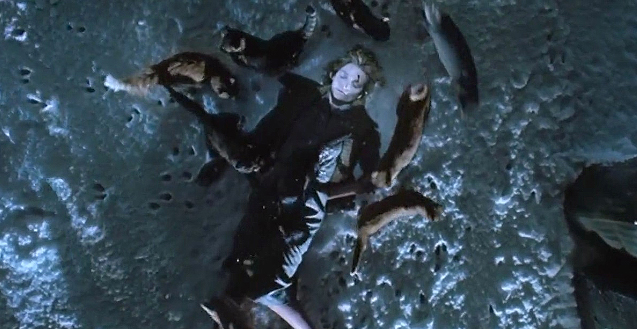
The stray cats in Batman Returns
Merely unconscious after being pushed out her window, or killed by the fall in Batman Returns? Either way, Selina Kyle (Michelle Pfeiffer) seemed to be revived by a group of stray cats she would feed—the first of which foreshadowed the memorable face-licking antics Kyle would get up to atop Batman after her transformation into Catwoman. It’s an origin impossible without cats, creating a character that embodies one.

Elle’s cat Marty
What an asshole. As Paul Verhoeven’s confronting thriller Elle opens, it’s with screen legend Isabelle Huppert being raped in her home while her cat Marty… just watches, unimpressed. Afterwards, Michèle Leblanc (Huppert) chides Marty: “You didn’t have to put out his eyes, but you could at least have scratched him!”
It’s an unconventional, brutal opening to a film that continues in that vein to strong effect.
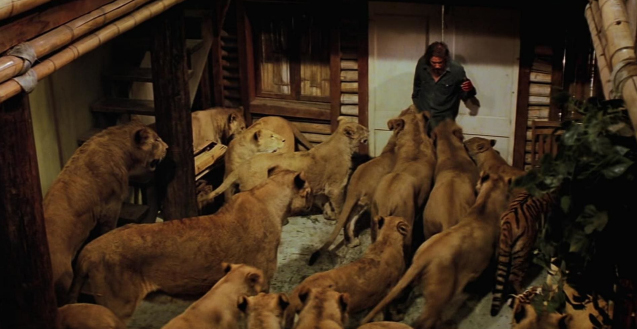
All the big cats of Roar
What would Roar have been without its lions and tigers? Certainly not the severe injury-prone production it has become notorious for. Filmed over 11 years, 70 cast and crew members were allegedly injured by the four-legged true stars of the film (Tippi Hedren and Melanie Griffith notwithstanding).
Griffith needed a facial reconstruction; cinematographer Jan de Bont was scalped; director/star Noel Marshall contracted gangrene from his wounds. If you’ve never seen this utterly insane, hilariously unsafe pic, it really has to be seen to be believed.

Inside Llewyn Davis – a cat?
Cats are vital to the narrative of the Coens’ folk music tale Inside Llewyn Davis (one escapes from an apartment Davis (Oscar Isaac) sleeps in and he endeavours to return it to its rightful home). Even more so than that, there’s an argument that “Llewyn actually is the cat. And the cat is Llewyn.” Do we take a position on this? I dunno, what do I look like, a cat?
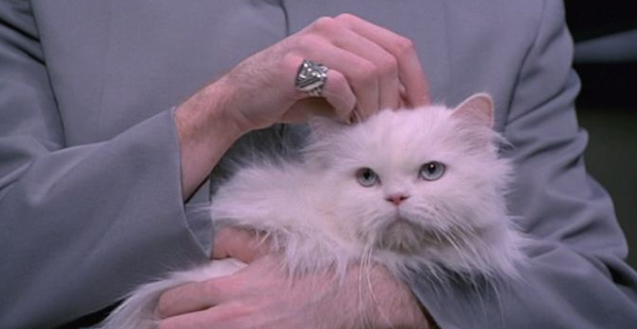
When Mr. Bigglesworth gets upset, people die
Beyond an unpictured meow, it’s unclear how Dr Evil’s furry friend demonstrates his anger in the first Austin Powers film, however the evil mastermind’s prediction is soon proved correct.
Sadly, Dr. Evil’s lap-dwelling companion would have something more concrete to by upset about after the pair are revived from cryogenic freezing in the 1990s, as seen when he exclaims “Look what you’ve done to Mr. Bigglesworth!”
Sign up for Flicks updates
Of course, we’d have none of this to enjoy without the various Blofelds and cats of the 007 series:

A hungry cat and The Long Goodbye
Robert Altman’s wry Raymond Chandler adaptation The Long Goodbye memorably opens with private investigator Philip Marlowe (Elliot Gould) being woken by his hungry cat.
With no food to be found, Marlowe tries a couple of tricks, including trying to fool his orange pal by serving different brand of cat food out of one of his old, used cans. It’s a strategy that doesn’t work, just like it didn’t when the scene was ripped off paid homage in a cat food commercial.

A dog called Dog and a cat named Horse
This enormous and powerful tomcat is seemingly the polar opposite of the titular Dog in Footrot Flats: The Dog’s Tale. While no-one in their right mind would want to mess with Horse (named because he’s the size of one?) the film’s conclusion suggests that maybe Dog is as tough as him after all—when it comes to surfing, anyhow.
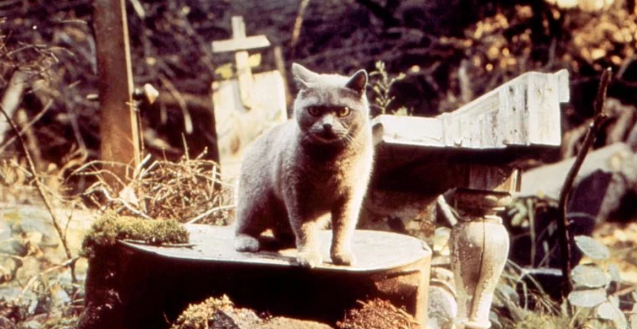
Pet Sematary’s Church
No, we’re not being punny—that’s the name of the cat from Pet Sematary who proved to have at least two lives (one of them substantially less pleasant to be around than the other). Possibly out-acting some of his co-stars in the 1989 Stephen King adaptation, Church has been re-cast in the upcoming remake. Take a look at a pic to tell if this is an improvement—and then watch the remake trailer if you dare.
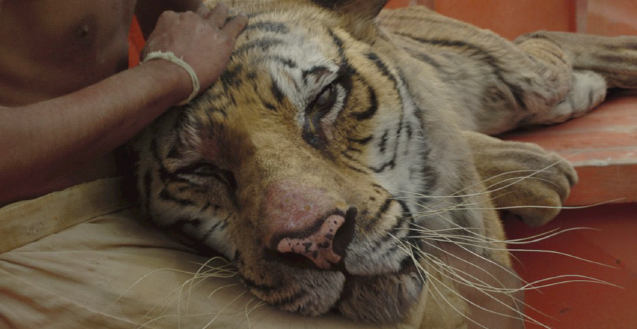
Life of Pi’s tiger Richard Parker
If Richard Parker had a better agent, the tiger might have shared top billing alongside Suraj Sharma in Ang Lee’s Oscar-winning tale of oceanic survival. Then again, composite real/digital creations don’t tend to get agents, so maybe this is a case of roaring up the wrong tree. Nevertheless, this hybrid of real footage and the efforts of incredibly skilled effects workers was a crucial component of Life of Pi, with the extent of their success evident in the film’s Best Visual Effects Oscar, and illustrated in the clip below.

Breakfast at Tiffany’s cat called Cat
With Audrey Hepburn’s portrayal of Holly Golighty in Breakfast at Tiffany’s being so strikingly iconic, it’s easy to gloss over how troubled her character is in the film. That’s perhaps best summed up by her relationship with a cat that clearly demonstrates her fear of commitment. Possibly more a case of Golightly being adopted by the cat than the other way around, her inability to develop an emotional relationship with anyone manifests in calling her cat “Cat”.
Until she can find her place in the world, she won’t give the cat a name—a postponement of responsibility that the cat would surely be wounded by if, like all felines, it wasn’t already dictating terms in their relationship.

Jonesy, last survivor of the Nostromo?
Ellen Ripley’s pet cat in Alien has seen some stuff. Onboard the commercial freighter to keep the crew company (and hunt the odd rodent) he comes up against a predator several levels up the food chain in the form of the alien xenomorph that slaughters its way through the crew.
While Jones himself never becomes a target of the alien, he’s got to be held at least partially responsible for the death of Brett (Harry Dean Stanton), who’s killed by the creature when tasked to catch the cat (it’s been confusing the motion tracker the crew hope to use to catch the alien).
As the 1979 film ends, Jones safely escapes the freighter with Ripley, and is seen settling into a new life with her in Aliens. Prior to departing with colonial marines in the sequel, Ripley tells him “And you, you little shit-head, you are staying here”—the events of the third film in the series suggesting Jones may have outlived all the human crew of the original.
















